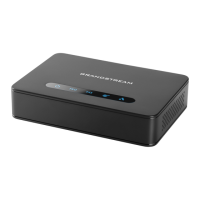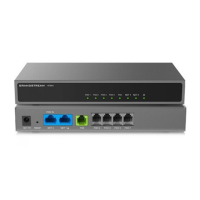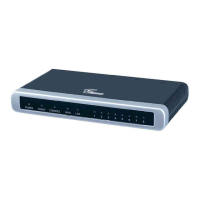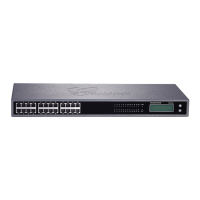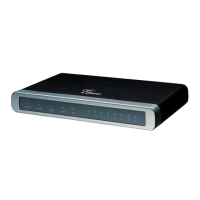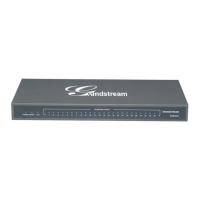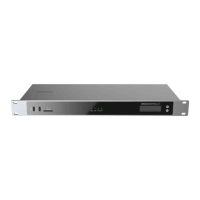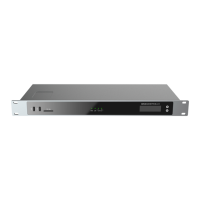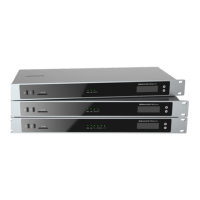The default value for FXS port is 6004
Use Random SIP Port
Controls whether to use congured or random SIP ports. This is usually necessary when multiple
HT841/HT881 are behind the same NAT.
The default is No.
Use Random RTP Port
Controls whether to use congured or random RTP ports. This is usually necessary when multiple
HT841/HT881 are behind the same NAT.
The default is No.
RTP/RTCP Keep Alive On Hold
Enables or disables RTP/RTCP keep-alive packets during call hold to maintain connectivity and prevent
session timeouts.
Disabled by default.
Remove OBP from Route Header
Removes outbound proxy info in “Route” header when sending SIP packets.
Default setting is No.
Support SIP Instance ID
Gives the users the possibility of making conference calls by pressing “Flash” key, when it’s enabled by dialing
*23 +second callee number. Default is No
SIP URI Scheme When Using TLS
Species if “sip” or “sips” will be used when TLS/TCP is selected for SIP Transport. The default setting is
“sips”.
Use Actual Ephemeral Port in
Contact with TCP/TLS
Controls the port information in the Via header and Contact header. If set to “No”, these port numbers will use
the permanent listening port on the phone. Otherwise, they will use the ephemeral port for the connection.
Default is No.
Tel URI
Indicates E.164 number in “From” header by adding “User=Phone” parameter or using “Tel:” in SIP packets, if
the HT841/HT881 has an assigned PSTN Number.
Disabled: Use “SIP User ID” information in the Request-Line and “From” header.
User=Phone: “User=Phone” parameter will be attached to the Request-Line and “From” header in the SIP
request to indicate the E.164 number. If set to “Enable”.
Enabled: “Tel:” will be used instead of “sip:” in the SIP request.
Please consult your carrier before changing this parameter. The default is Disabled.
Use Privacy Header
Determines if the “Privacy header” will be presented in the SIP INVITE message and if it includes the caller info
in this header. If set to Default, it will add Privacy header unless special feature is Telkom SA or CBCOM.
Default is Default.
Use P-Preferred-Identity Header
Species if the P-Preferred-Identity Header will be presented in the SIP INVITE message. If set to “default”, the
P-Preferred-Identity Header will be omitted in SIP INVITE message when Telkom SA or CBCOM is active. If set
to “Yes”, the P-Preferred- Identity Header will always be presented. If set to “No”, it will be omitted. Default
setting is: Default.
Use P-Access-Network-Info Header
With this feature enabled, device will populate the WAN access node with IEE-802.11a, IEE-802.11b in P-
Access-Network-Info SIP header.
Use P-Emergency-Info Header This feature support of IEEE-48-addr and IEEE-EUI-64 in SIP header for emergency calls.
Use P-Asserted-Identity Header
When this feature is set to Yes, device will send P-Asserted-Identity Header on the SIP Invite.
Default setting is No.
SIP T1 Timeout
Denes T1 timeout value. It is an estimate of the round-trip time between the client and server transactions.
For example, HT841/HT881 will attempt to send a request to a SIP server. The time it takes between sending
out the request to the point of getting a response is the SIP T1 timer. If no response is received the timeout is
increased to (2*T1) and then (4*T1). Request re-transmit retries would continue until a maximum amount of
time is dened by T2. The default is 0.5 seconds.
SIP T2 Interval Identies maximum retransmission interval for non-INVITE requests and INVITE responses. Retransmitting

